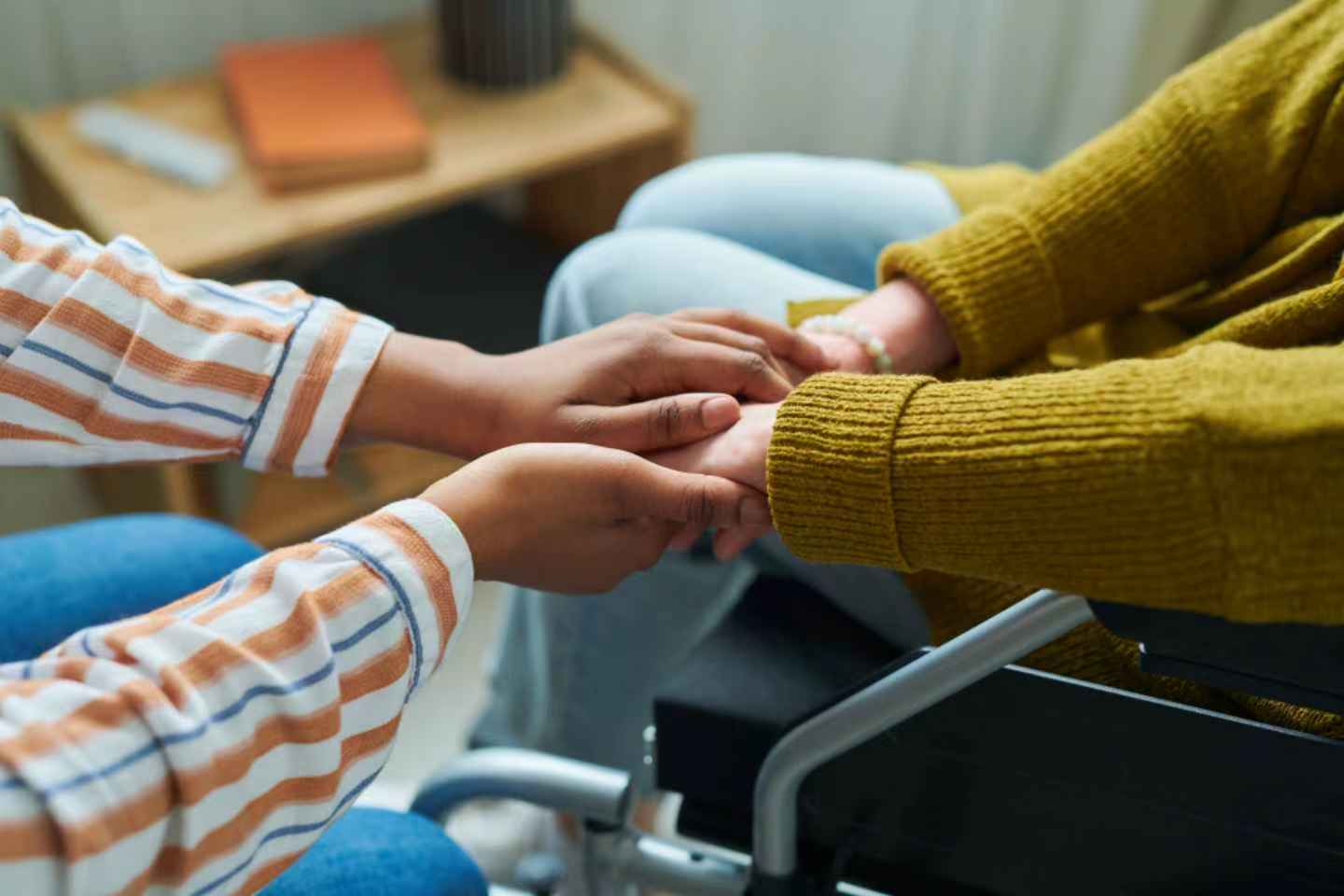June 21 is Global ALS/MND Awareness Day - a time to honor the courage of those living with amyotrophic lateral sclerosis (ALS), or Lou Gehrig’s disease, and to spotlight breakthroughs around the world. Around the globe, innovative science, patient advocacy, and international collaboration - including the effort of BGI Group - are helping to bring new hope to the ALS community.
 Amyotrophic Lateral Sclerosis (ALS) is a neurodegenerative condition that leads to muscle weakness that gets worse over time. Around the world, communities are uniting to support ALS patients and advance care, research, and hope. (Credit: Shutterstock)
Amyotrophic Lateral Sclerosis (ALS) is a neurodegenerative condition that leads to muscle weakness that gets worse over time. Around the world, communities are uniting to support ALS patients and advance care, research, and hope. (Credit: Shutterstock)
A New Chapter: Precision Medicine and the Promise of Tofersen
For decades, ALS has been a devastating diagnosis, robbing people of movement, speech, and eventually, the ability to breathe - all while the mind remains clear. Treatments have been limited, but in April 2023, a significant milestone was reached with the U.S. Food and Drug Administration (FDA) approval of Tofersen - the world’s first precision therapy targeting SOD1 gene mutations in ALS. This marked the arrival of a disease-modifying drug and offered new hope for patients who previously had only supportive care options.
Tofersen represents more than just a single drug; it signals the dawn of a new era of precision medicine for ALS. While this therapy is an important advance for patients with SOD1 mutations, ALS itself is a highly complex disease. The ongoing need for broader solutions - capable of addressing the diverse causes and mechanisms of ALS - continues to drive scientists and patient advocates to explore new genetic and molecular pathways in the search for more effective treatments for all those affected.
Genomics in Action: BGI Group’s Bold Effort
At the forefront of ALS research and patient support is BGI Group. In partnership with Mr. Cai Lei - an ALS patient, advocate, and Chairman of the AskHelpU ALS Patient Platform - BGI launched the first nationwide free genetic testing program for people with ALS in 2023. The goal of this groundbreaking initiative was to uncover hereditary factors behind ALS, accelerate accurate diagnosis, and lay the foundation for new therapies. Further strengthening this collaboration, Mr. Cai Lei and Dr. Yin Ye, CEO and Executive Director of BGI Group, also announced the creation of a joint multi-omics research laboratory to accelerate ALS research.
 Mr. Cai Lei (left) and Dr. Yin Ye sign an agreement on June 7, 2024, officially launching the Cai Lei & BGI ALS Multi-omics Research Joint Laboratory.
Mr. Cai Lei (left) and Dr. Yin Ye sign an agreement on June 7, 2024, officially launching the Cai Lei & BGI ALS Multi-omics Research Joint Laboratory.
The program quickly made a significant impact. In its first phase, BGI’s research team conducted whole genome sequencing (WGS) and analysis on 194 samples from 76 ALS-affected families. This family-based approach revealed a higher proportion of suspected disease-causing genetic variants than patient-only testing methods, highlighting the value of WGS in families.
Building on these results, the second phase expanded to include 471 additional samples from 175 more families, bringing the total number of samples analyzed to 665. In the second phase alone, 12 families were identified with confirmed pathogenic variants, resulting in an overall positive detection rate of 8%. Importantly, the research also revealed that ALS is not a single disease but a complex spectrum of related conditions with overlapping symptoms.
A standout feature of this project is its use of WGS, which in the second phase achieved a 33.3% higher positive detection rate than standard whole exome sequencing (WES). Notably, 5.4% of patients who previously received negative results from genetic tests were newly identified as having disease-associated genetic mutations through this advanced analysis.
Reflecting on this patient-centered approach, Dr. Yin said: “It is not that we give patients hope, but that they give us direction and motivation in scientific research.”
Next-Gen Technology: Long-read Sequencing and Spatial Multi-Omics
BGI Group is pushing the boundaries of ALS research far beyond short-read gene sequencing. Recognizing that short-read genetic analysis alone cannot fully unravel the complexity of ALS, BGI has introduced its proprietary long-read sequencing technology, which allows scientists to detect large or complex genetic changes that short-read methods may miss. This approach opens new possibilities for discovering previously hidden ALS-related mutations and mechanisms, paving the way for more personalized treatments. This technology will be applied in the ongoing third phase of the testing program.
Yet this is just one part of the picture. To gain a more complete understanding of ALS, BGI has pioneered the use of its advanced Stereo-seq spatial multi-omics technology, which can achieve both subcellular resolution and panoramic views, enabling researchers to map the intricate microenvironment within ALS patients’ muscle tissue.
Using Stereo-seq, BGI scientists have identified novel repair-type muscle cell nuclei within affected muscle, which are surrounded by localized inflammation and fibrosis. While these special nuclei suggest the body’s attempt to repair muscle damage, their presence also highlights ongoing tissue injury and abnormal scarring - processes that may ultimately drive muscle atrophy in ALS. Researchers are now delving deeper into the muscle microenvironment, searching for mechanisms and molecular targets that could slow or halt disease progression.
In June 2024, BGI Group became the first to report abnormal expression of Interleukin-17B in the muscle tissue of ALS patients, providing the first clues to its potential link with muscle fibrosis. As Mr. Cai commented, this discovery is not just the identification of a new target but also a major step forward in preclinical research and future drug development.
Patients at the Center: A New Path for Rare Disease Research
BGI Group’s partnership with patients, particularly with Mr. Cai’s advocacy, has led to the creation of a comprehensive ALS genetic and clinical data platform. Patients willingly provide samples and information, knowing their participation could help others. This crowdsourced approach not only accelerates research but also empowers patients as active partners in the search for a cure.
In addition to scientific leadership, Dr. Yin has personally contributed to the cause, donating nearly 1.82 million RMB (approximately $250,000) to the ALS fund of the Mammoth Foundation. Dr. Yin put it simply: “Every patient’s participation is a light in the darkness - together, we illuminate the path forward for ALS research.”
Recent progress demonstrates the power of collaboration among scientists, patients, and the wider community. From the approval of Tofersen to the expansion of genetic testing and pioneering research at BGI Group, the boundaries of ALS care are being pushed further than ever before - benefiting people worldwide.
On this Global ALS/MND Awareness Day, we are reminded that innovation transcends borders. The fight against ALS is a shared global mission, and every breakthrough - no matter where it occurs - brings hope to millions. Through dedicated research, unwavering advocacy, and the united strength of patients and scientists, we draw closer to a future where ALS is no longer a life sentence.
Science melts the ice, and spring will return.



